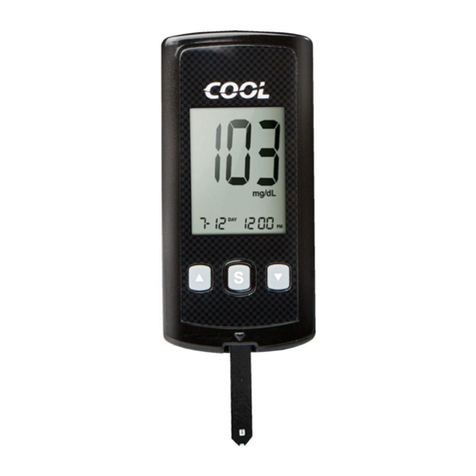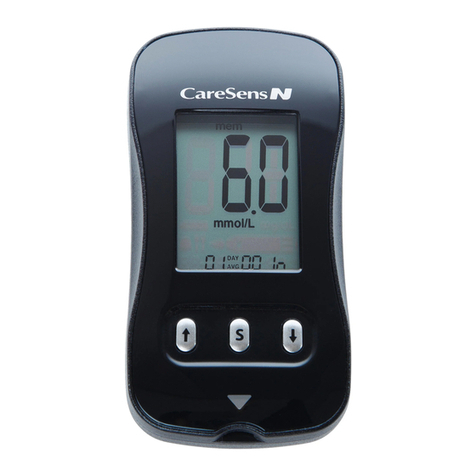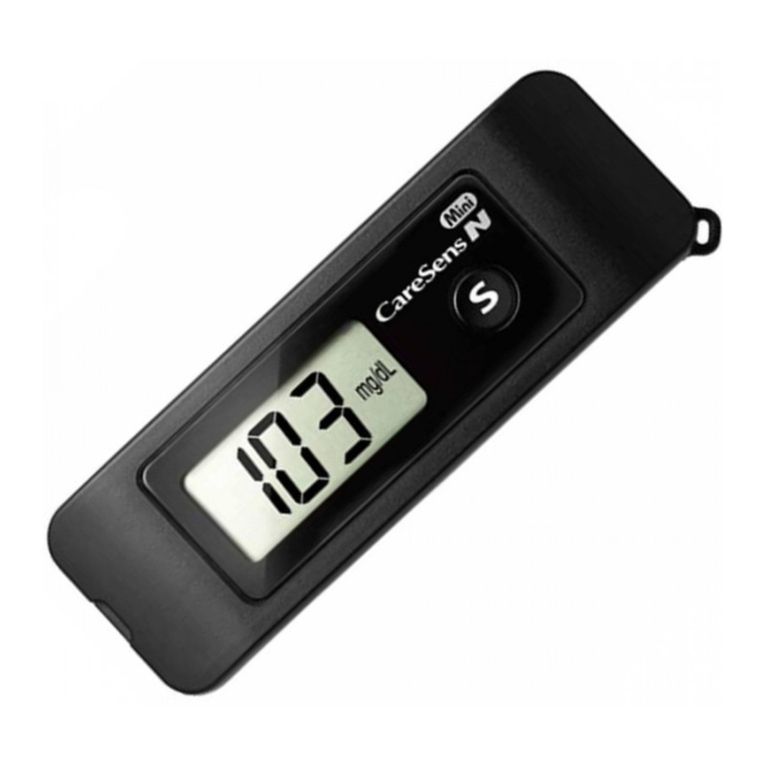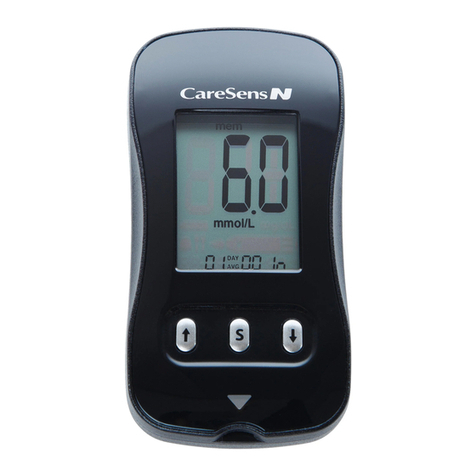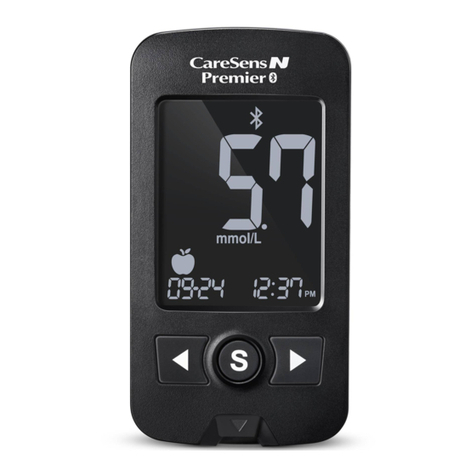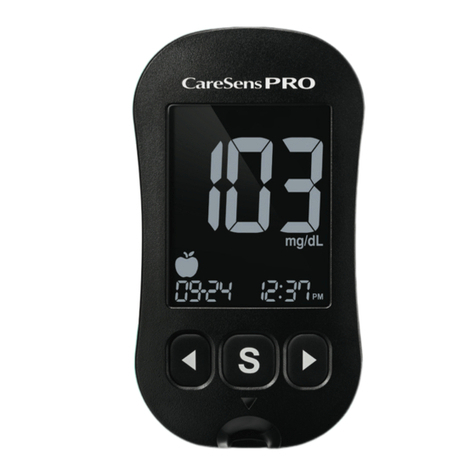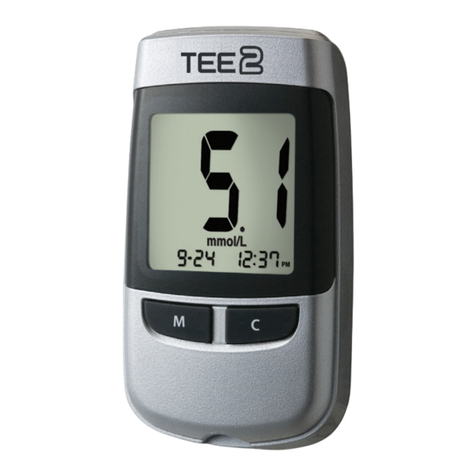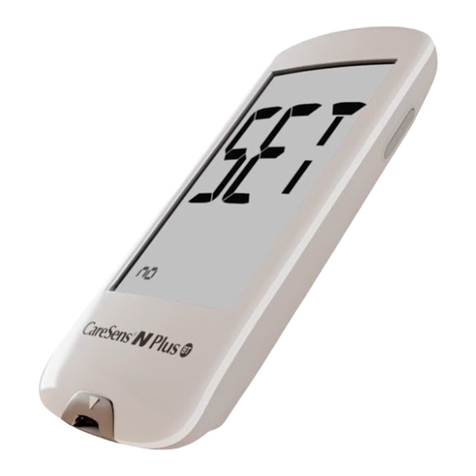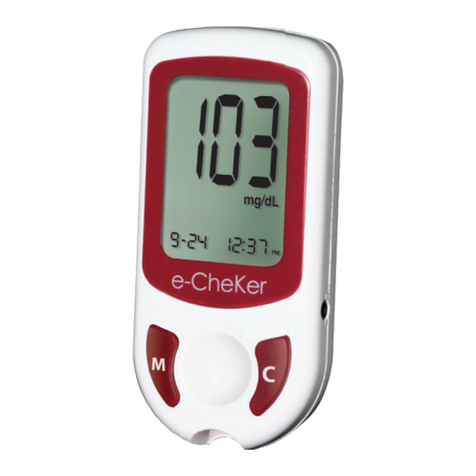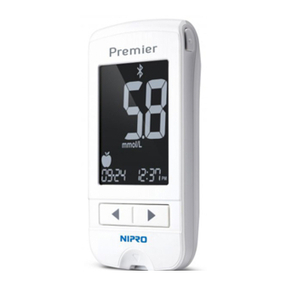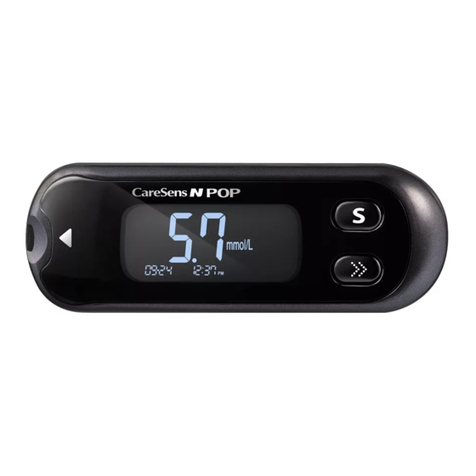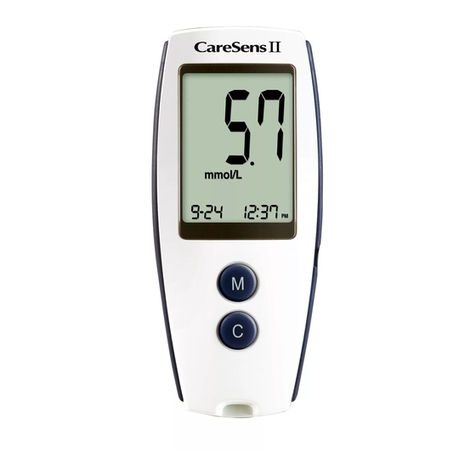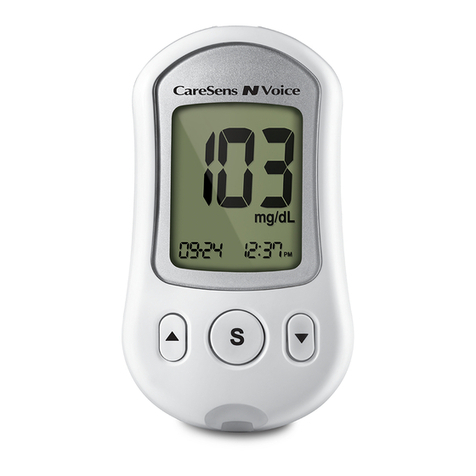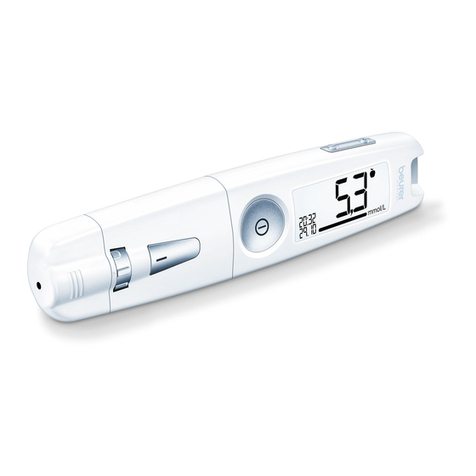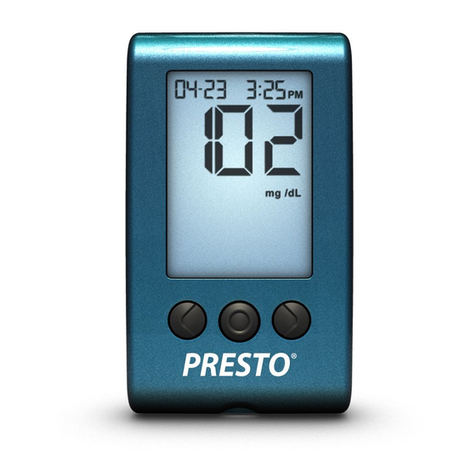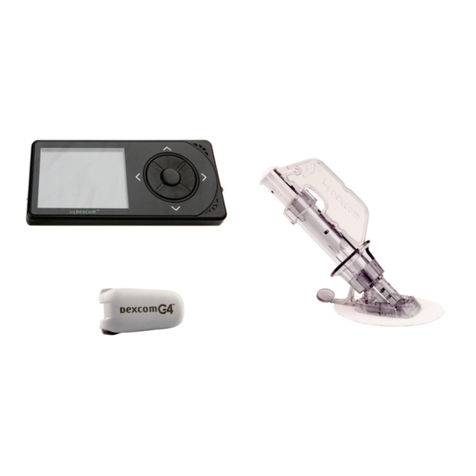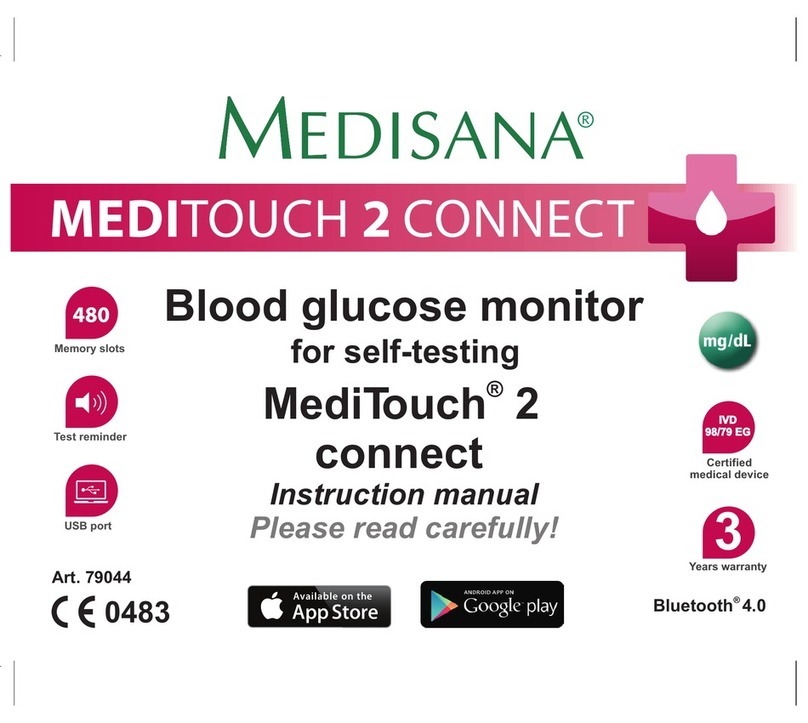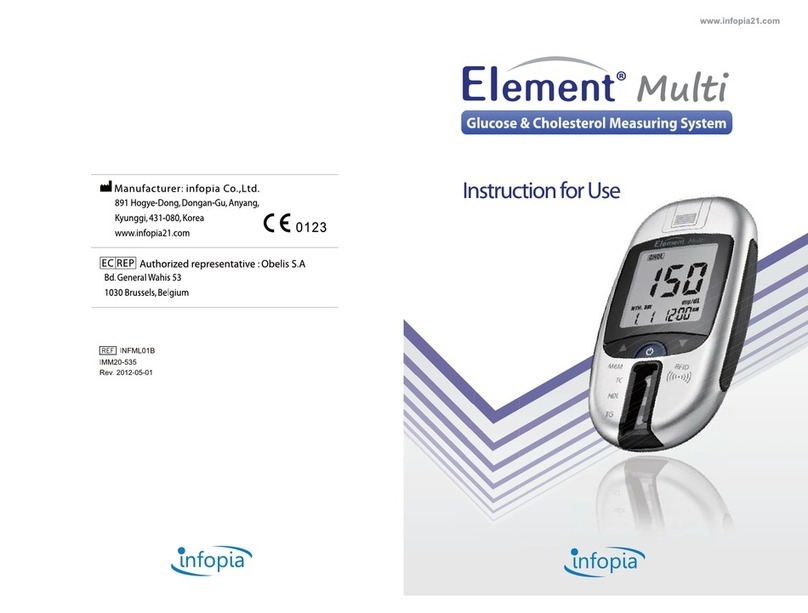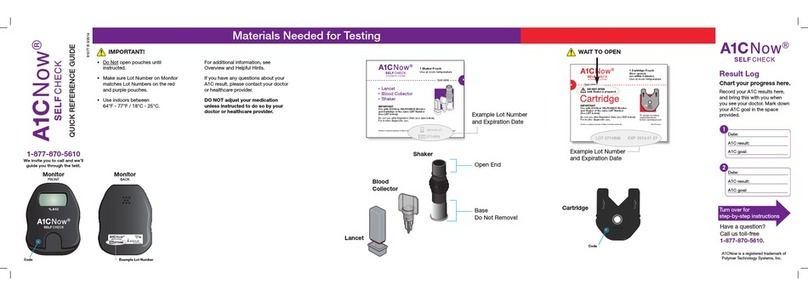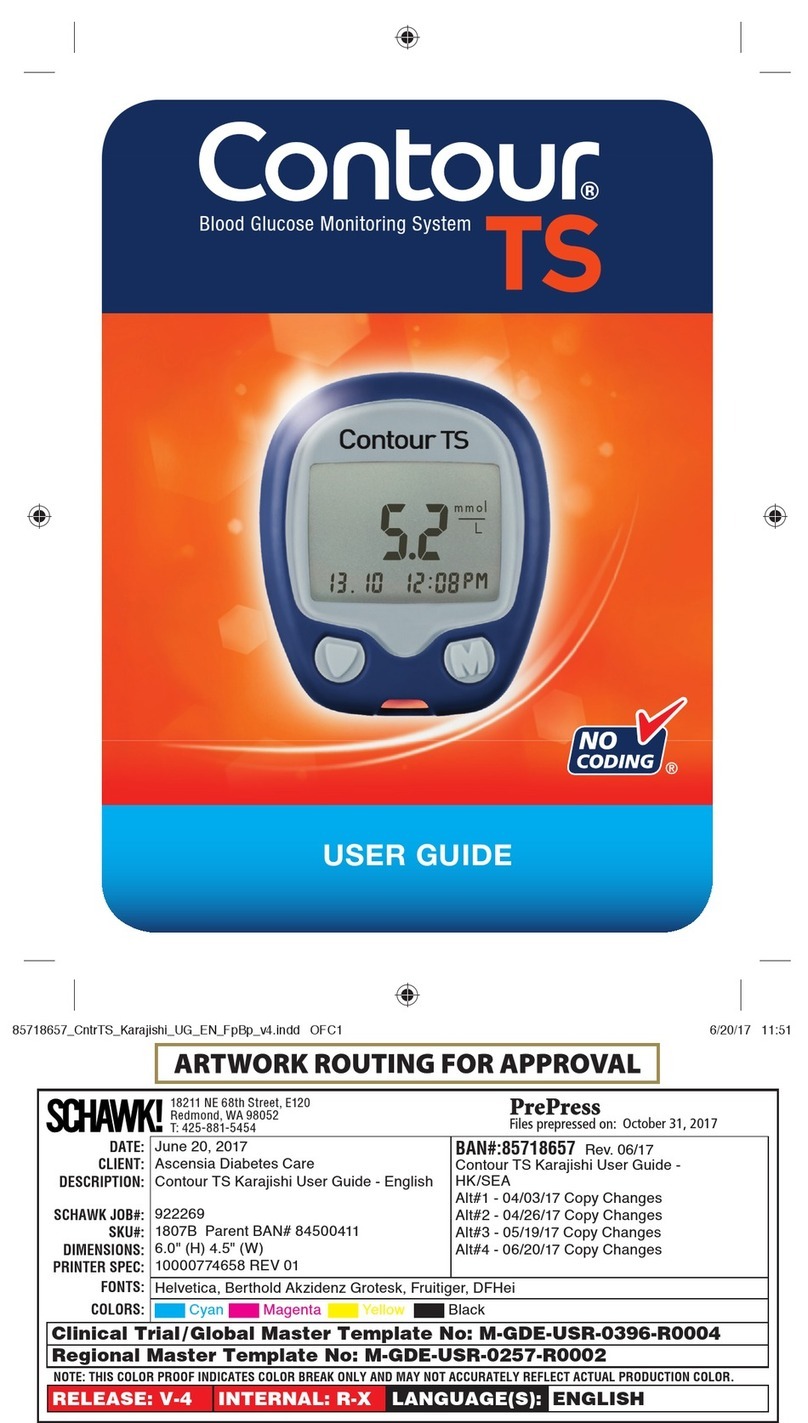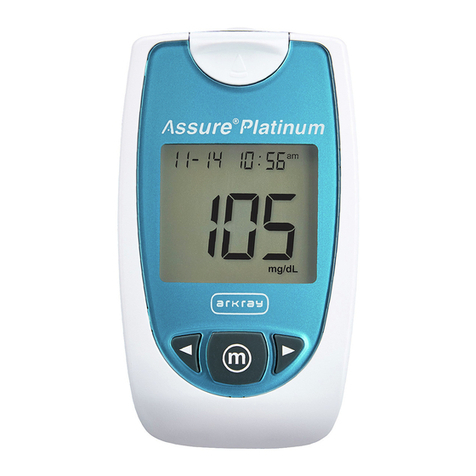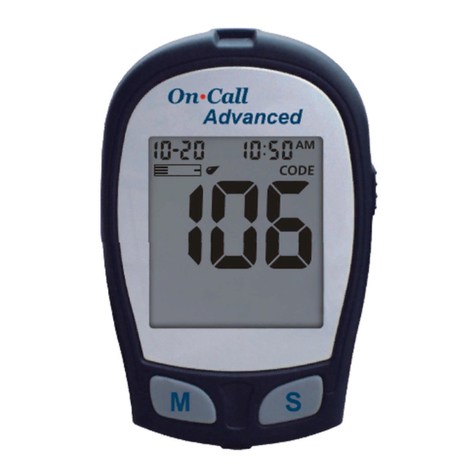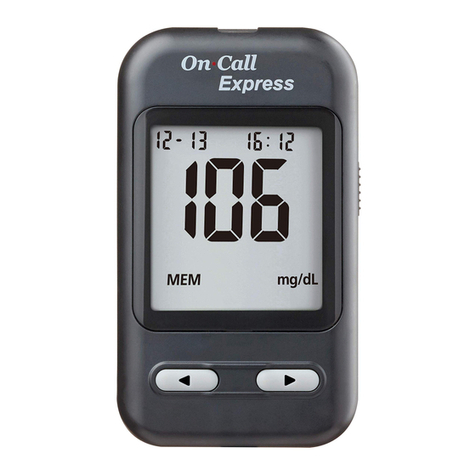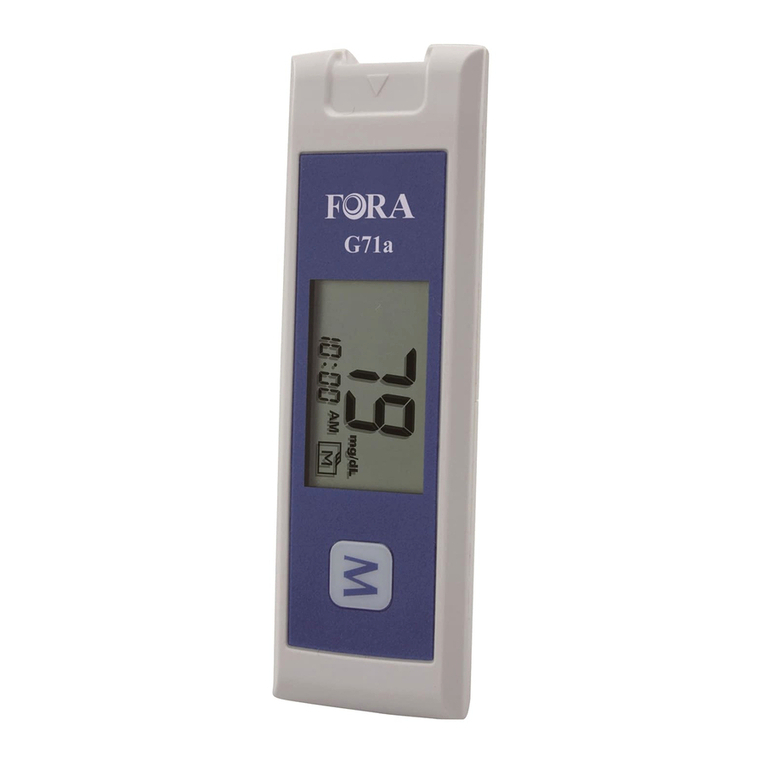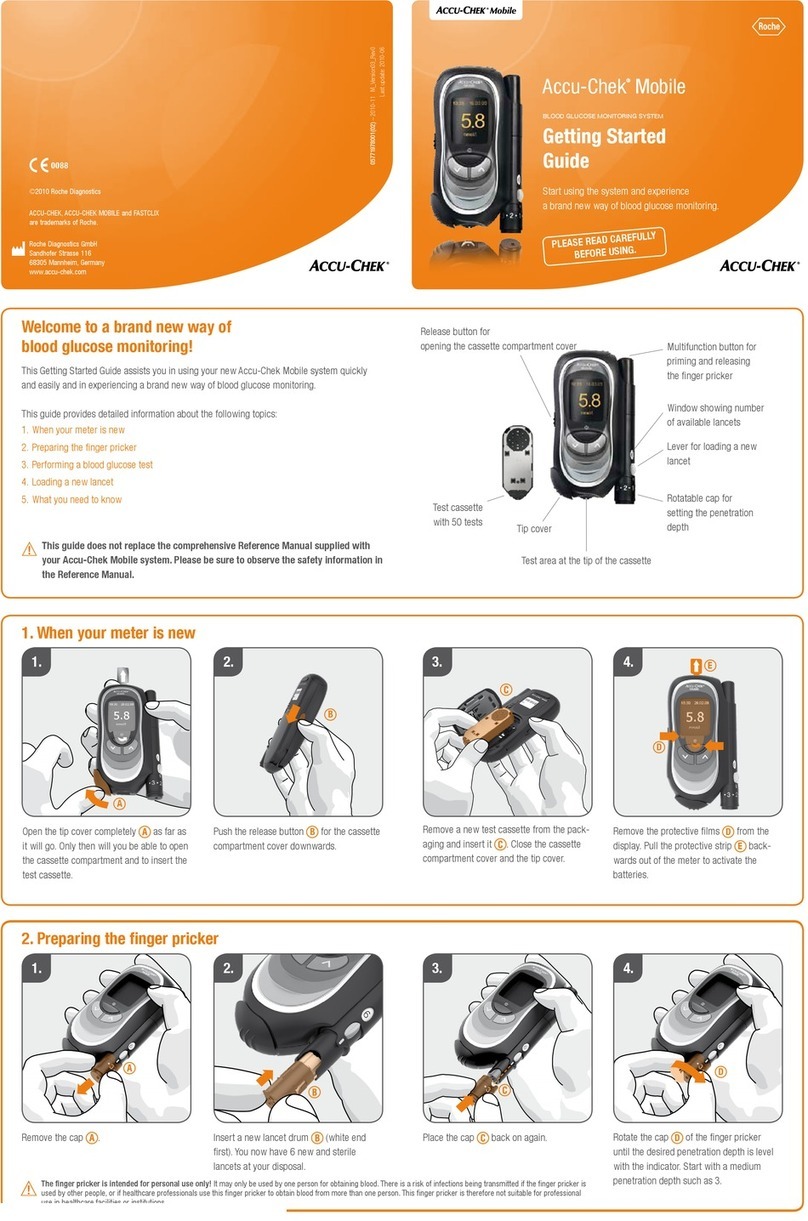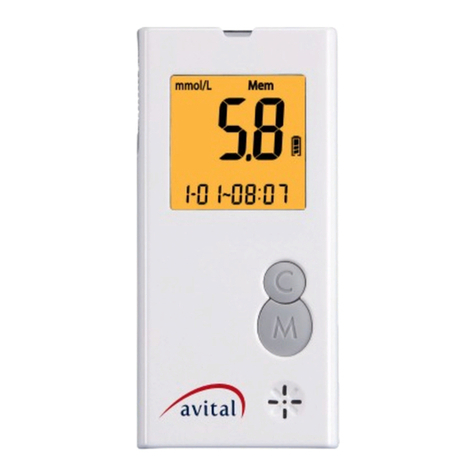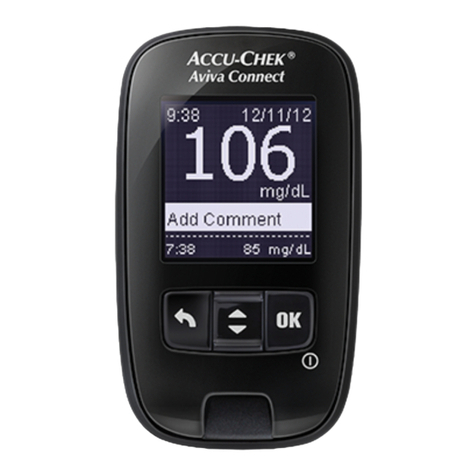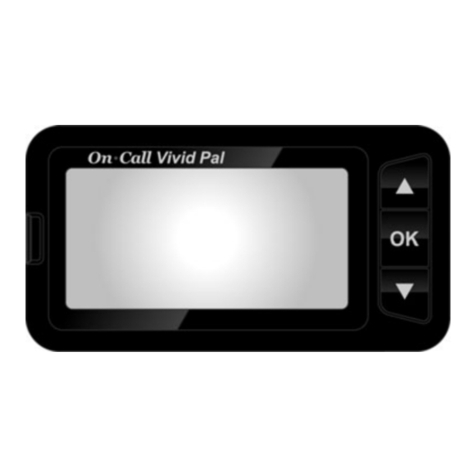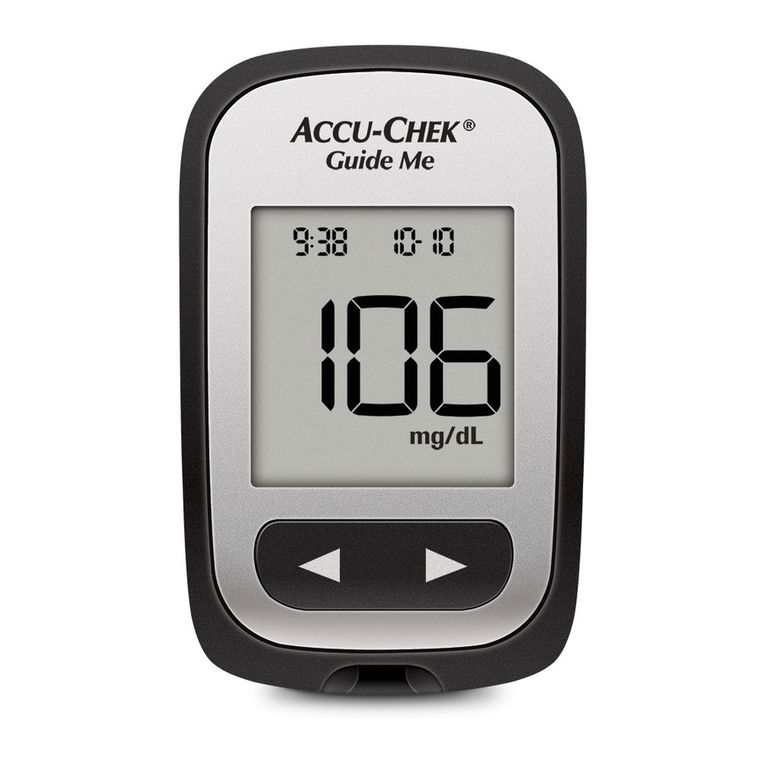Important Information:Read this First!
To receive safe and optimum system benefits, please read the
entire manual contents before using the system. Please note the
following instructions:
Intended use:
CareSens N POP Blood Glucose Monitoring System is used for
the quantitative measurement of the glucose level in capillary
whole blood as an aid in monitoring diabetes management
effectively at home or in clinical settings. CareSens N POP
Blood Glucose Monitoring System should be used only for
self-testing outside the body (in vitro diagnostic use only).
CareSens N POP Blood Glucose Monitoring System should not
be used for the diagnosis of diabetes or for testing newborns.
Testing sites include the traditional fingertip testing along
with alternate sites testing on forearm, palm, thigh and calf.
t 5IF$BSF4FOT/101CMPPEHMVDPTFNPOJUPSJOHTZTUFNJT
intended for self-testing outside the body (in vitro diagnostic
use).
t 5IFHMVDPTFJOUIFCMPPETBNQMFNJYFTXJUITQFDJBM
chemicals on the test strip to produce a small electrical
current. The CareSens N POP meter detects this electrical
current and measures the amount of glucose in the blood
sample.
t 5IF$BSF4FOT/101CMPPEHMVDPTFNFUFSJTEFTJHOFEUP
minimize code related errors in monitoring by using the
no-coding function.
t 5IF$BSF4FOT/101CMPPEHMVDPTFNFUFSTIPVMECFVTFE
only with the CareSens N strip.
t "OBCOPSNBMMZIJHIPSMPXSFECMPPEDFMMDPVOUIFNBUPDSJU
level over 60% or below 20%) may produce inaccurate
results.
t *GZPVSUFTUSFTVMUJTCFMPXNHE-NNPM-PSBCPWF
240 mg/dL (13.3 mmol/L), consult a healthcare professional
immediately.
If you need assistance, please contact your authorized i-SENS
sales representative or visit www.i-sens.com for more information.
Important Information
For in vitro diagnostic use
This product fulfills the requirements for Directive 98/79/EC
on in vitro diagnostic medical devices
Cautions for safety and optimum product use
Use by (unopened or opened test strip vial)
Do not discard this product with other household-type
waste
Authorized representative
Do not reuse Batch code
Consult instruction for use Manufacturer
Temperature limitations Serial number
The following chart explains the symbols you’ll find in the
CareSens N POP owner's booklet, product packaging, and
product inserts.
